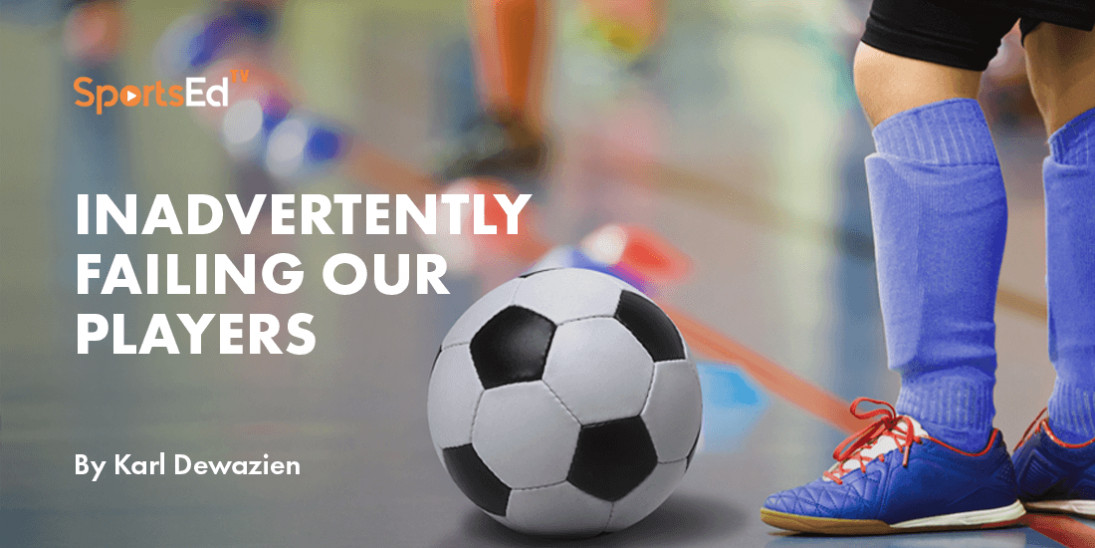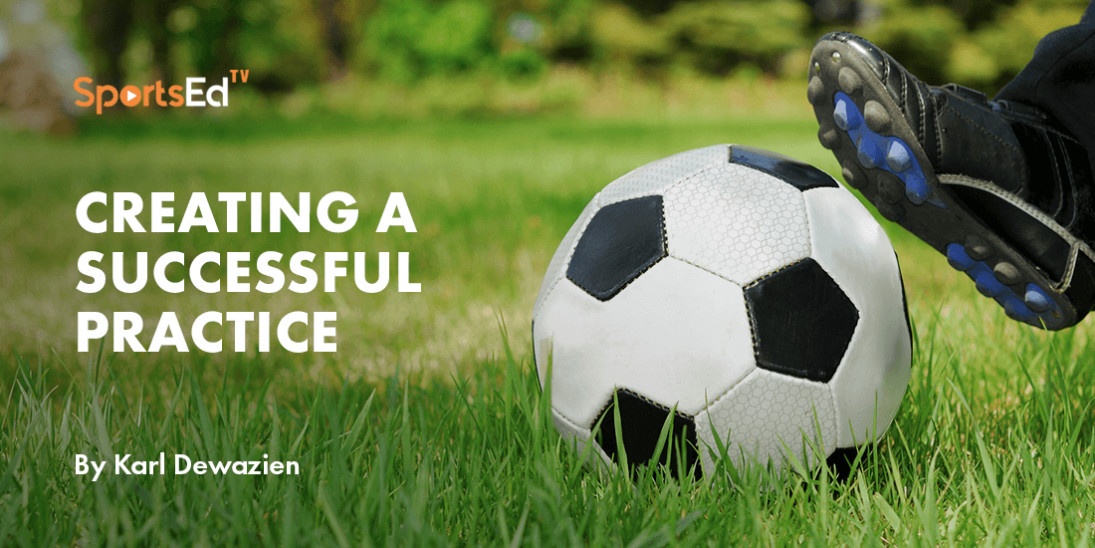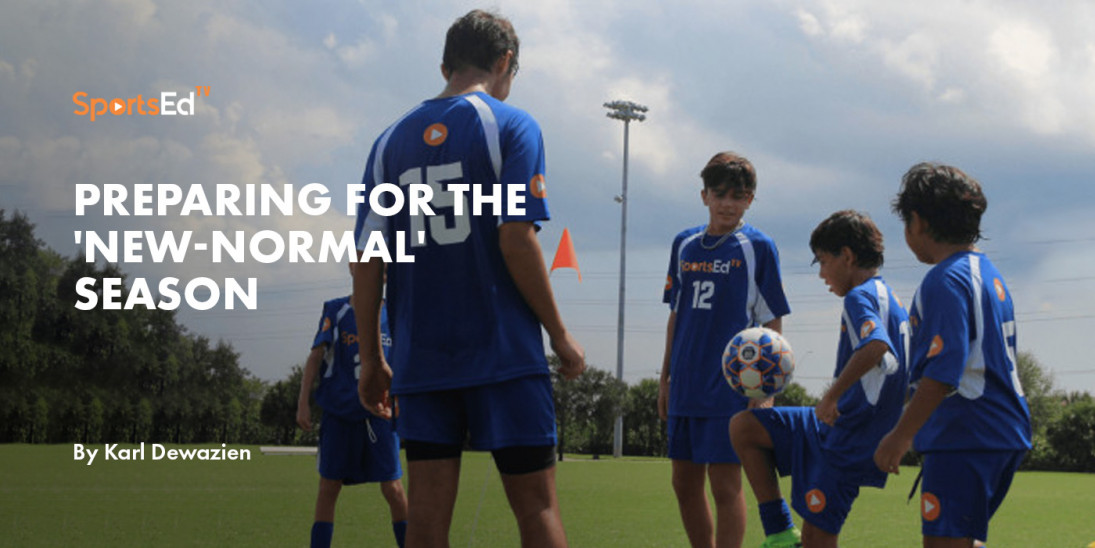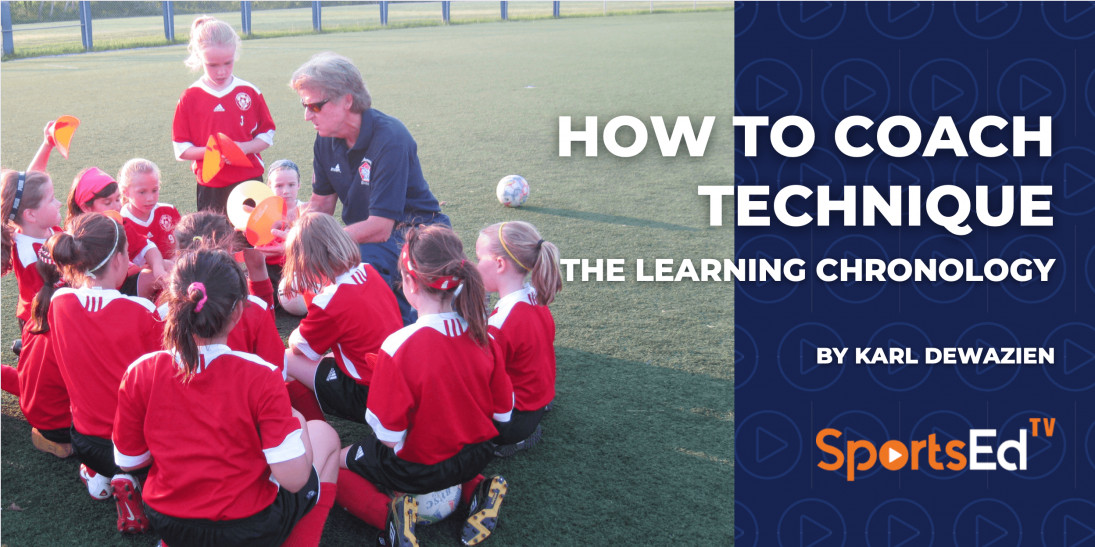Soccer
Welcome and thanks for visiting...

Inadvertently Failing Our Players: How Youth Soccer Coaches Can Help Players Develop

SportsEdTV Soccer is committed to bringing athletes, coaches, and parents pro-level Soccer education videos for FREE. All levels, anywhere, anytime. Check out our full instructional library and sign up to join our Soccer community.
Karl Dewazien of FUNdamental SOCCER, Emeritus State Director of Coaching for the California Youth Soccer Association 1978-2012, discusses a common error in youth soccer coaching and how to fix it.
Fortunately, our younger players are the Best in the World when it comes to playing eye-foot coordination FUN games like Sharks & Minnows, King of the Dribblers, Simon Says, and countless more.
Unfortunately, providing them with opportunities to play against other teams in similar games is a challenge due to the lack of dedicated leagues, tournaments, or World Cups for these types of activities.
Thankfully, our coaches at younger ages are adept at teaching these games, and players enjoy learning/playing them.
HOWEVER, relying on these FUN games for soccer may limit the players in their growth and development, hindering them from reaching their full potential.
National soccer curricula, YouTube videos, and soccer apps often recommend playing these FUN games, leading youth coaches to follow their expert advice. Observe most of our youth practices, and you will see these games taught and played ad nauseam.
Although these games are enjoyable, they may not be the optimal approach to prepare players for soccer. It is crucial to evaluate whether our introductory training methods are effective in enhancing the players' Attack and Defense skills.
Coaches working with older players report and complain that players coming to them struggle with basic instincts, like Attacking when in possession of the ball and Defending when the opposition has the ball.
What Youth Soccer Practices Lack
One major contributing factor to these issues is the lack of clear reference points in practice. Without goals to Attack and Defend, how can players be expected to apply their skills in an actual game?
The absence of distinct targets during practice sessions is a significant cause of the issue. How can we anticipate players to execute their skills accurately in a game when there are no goals to attack or defend during their practice sessions?
- How can they learn to Read the game, Run into space, Receive the ball, Retain the ball and Release the ball in proper areas if there is no goal to Attack?
- How can they learn to read the game, Run to defend, use the Ready Stance, Reject advancement, and Regain ball possession if there is no goal to Defend?
Comparison with other sports:
Can you imagine learning to play Basketball without baskets, Baseball without bases; Bowling without pins; Darts without a board, or all the Net games like Ping-Pong, tennis, badminton and volleyball without a net. It would be a waste of time.
Likewise, playing soccer in practice without goals to Attack and Defend hinders development.
How To Improve Your Youth Soccer Practices
Introductory level coaches should teach players how to organize themselves and layout the fields for 1v1 and small-sided soccer games.
By laying out clear reference points (goals), players will have a better understanding of the game and how to apply their skills in a meaningful way.

To maximize practice time, incorporate soccer games with clear objectives: Scoring &; Defending a Goal!
While FUN games can be included in Warm-Up sessions, it is important to focus on clear objectives during practice to help players enhance their comprehension and skills in playing soccer.
Conclusion
It's worth noting that while our players may enjoy playing FUN games during practice, they do not choose to play them during their free time. If players are not choosing to play these games on their own, it raises questions about their effectiveness in fostering a Love for Soccer.
 If kids love what they do in practice, they will also do it in their free time!
If kids love what they do in practice, they will also do it in their free time!
Strange, is it not that we can teach so many varied eye-foot coordination games, but struggle to teach a simple game called SOCCER?
Yet, children around the world of the same age seem to become comfortable and proficient at playing soccer without formal coaching. This raises the question of why this is the case and whether there are lessons we can learn from them.
The beauty of soccer lies not only in its technical aspects but also in the creativity, joy, and spontaneity that players bring to the game. As coaches, it's our responsibility to create an environment that nurtures these qualities in our players.
By focusing on developing their natural instincts and Love for the Game, we can unlock their full potential and pave the way for the next generation of world-class players.
So, let's continue to explore new approaches, share our ideas, and never stop striving for excellence.
Who Knows What Great Things We Can Achieve Together?








